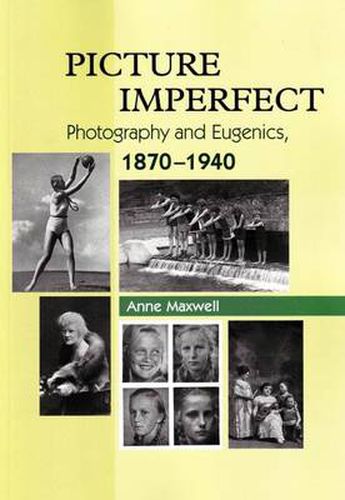Readings Newsletter
Become a Readings Member to make your shopping experience even easier.
Sign in or sign up for free!
You’re not far away from qualifying for FREE standard shipping within Australia
You’ve qualified for FREE standard shipping within Australia
The cart is loading…






This book documents and critically analyses the photographs that helped to strengthen as well as bring down the eugenics movement. Using a large body of racial-type images and a variety of historical and archival sources, and concentrating mainly on developments in Britain, the USA and Nazi Germany, this book explains how photography, as the most powerful visual medium of the late nineteenth and early twentieth centuries, was vital to the eugenics movement’s success – not only did it allow eugenicists to identify the people with superior and inferior hereditary traits, but it helped publicise and lend scientific authority to eugenicists’ racial theories. The author argues for a strong connection between the racial-type photographs that eugenicists created and the photographic images produced by nineteenth-century anthropologists and prison authorities, and how the photographic works of contemporary liberal anthropologists played a significant role in the eugenics movement’s downfall. Besides adding to our knowledge of photography’s crucial role in helping to authorise and implement some of the most controversial social policies of modem times, this book makes a major contribution to our understanding of the history of racism. The book looks at eugenics from the standpoint of its most significant cultural data – racial-type photography, investigating the techniques, media forms, and styles of photography used by eugenicists, and relating these to their racial theories and their social policies and goals. It demonstrates how the visual archive was crucially constitutive of eugenic racial science because it helped make many of its concepts appear both intuitive as well as scientifically legitimate.
$9.00 standard shipping within Australia
FREE standard shipping within Australia for orders over $100.00
Express & International shipping calculated at checkout
This book documents and critically analyses the photographs that helped to strengthen as well as bring down the eugenics movement. Using a large body of racial-type images and a variety of historical and archival sources, and concentrating mainly on developments in Britain, the USA and Nazi Germany, this book explains how photography, as the most powerful visual medium of the late nineteenth and early twentieth centuries, was vital to the eugenics movement’s success – not only did it allow eugenicists to identify the people with superior and inferior hereditary traits, but it helped publicise and lend scientific authority to eugenicists’ racial theories. The author argues for a strong connection between the racial-type photographs that eugenicists created and the photographic images produced by nineteenth-century anthropologists and prison authorities, and how the photographic works of contemporary liberal anthropologists played a significant role in the eugenics movement’s downfall. Besides adding to our knowledge of photography’s crucial role in helping to authorise and implement some of the most controversial social policies of modem times, this book makes a major contribution to our understanding of the history of racism. The book looks at eugenics from the standpoint of its most significant cultural data – racial-type photography, investigating the techniques, media forms, and styles of photography used by eugenicists, and relating these to their racial theories and their social policies and goals. It demonstrates how the visual archive was crucially constitutive of eugenic racial science because it helped make many of its concepts appear both intuitive as well as scientifically legitimate.